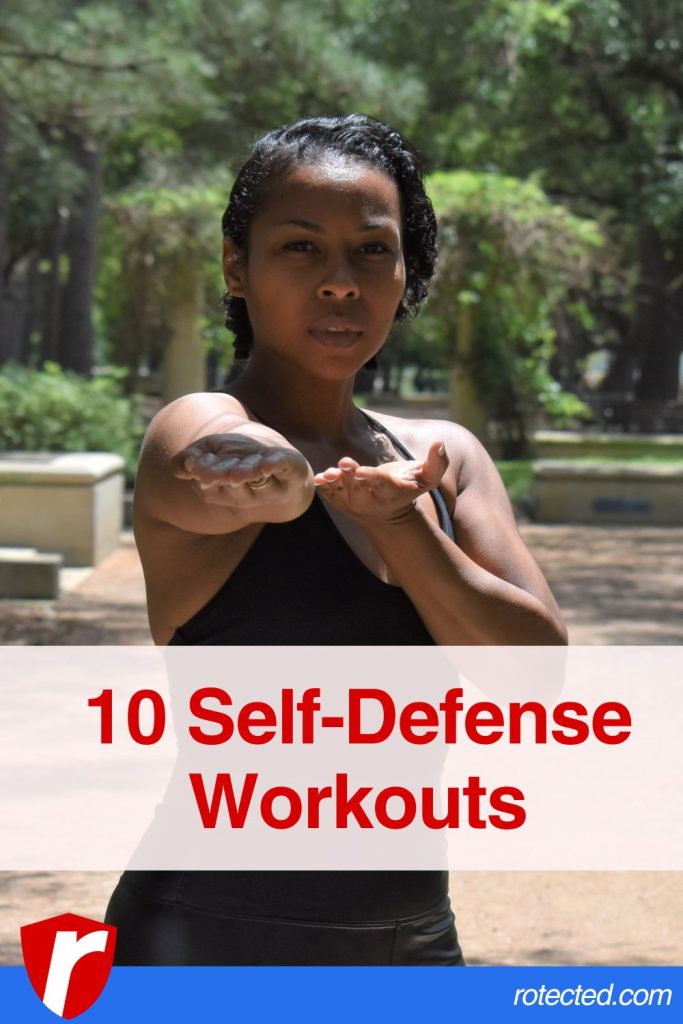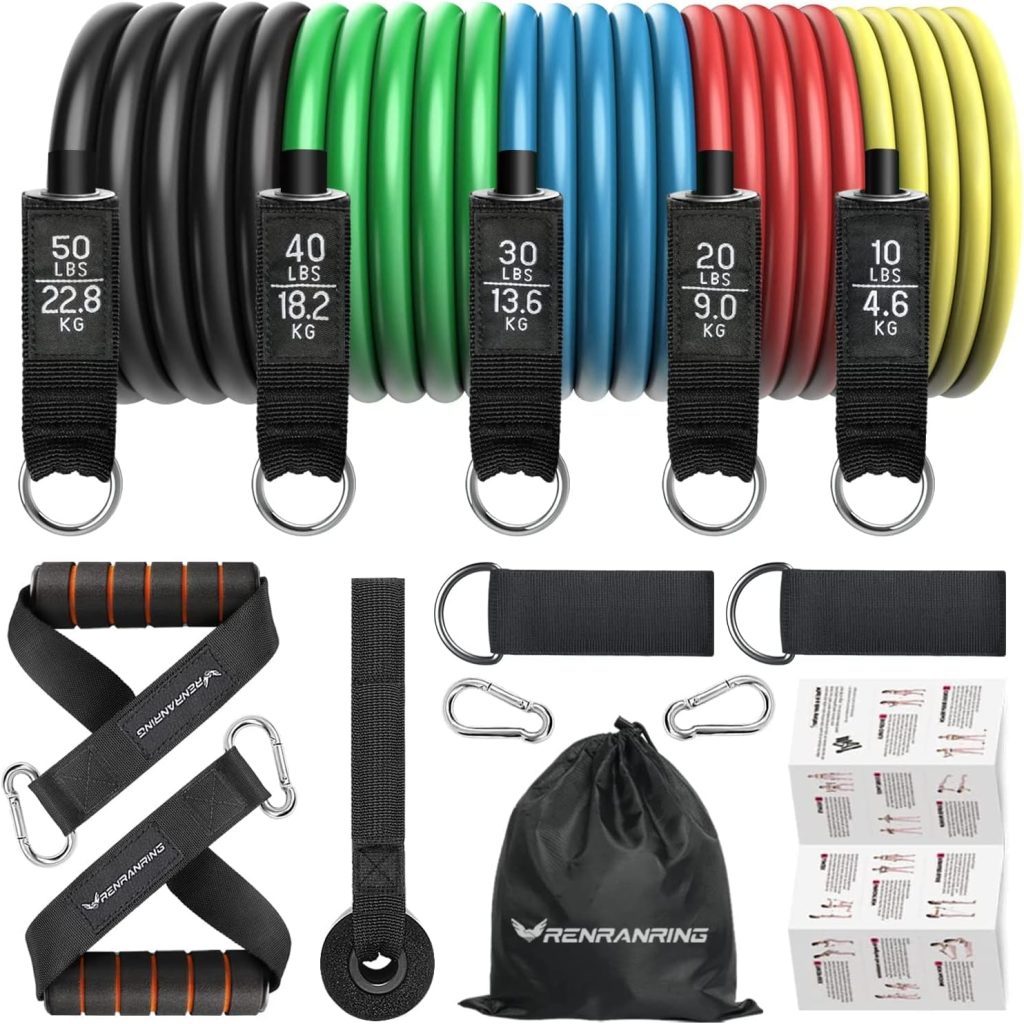There is no better way to feel confident in your own body than to train! It feels good to know you’re stronger, more flexible, faster, and more capable than you were yesterday. It’s a constant battle to beat your own personal records and make yourself a little bit better each time you train.
These 10 self-defense workouts will make you more capable, as well as more confident that you can handle yourself in a difficult situation. We recommend finding a workout that will improve on your weaknesses.
So, if you’re not flexible, then start doing some yoga! Also, you’re not limited to one workout, you can do yoga 3x a week, and some type of resistance training on other days. Feel free to mix it up – but don’t be afraid to push yourself and really give yourself a challenge!

1. Bodyweight Exercises
Push-ups, squats, and lunges are foundational bodyweight exercises that build strength and improve overall flexibility. Incorporate variations like wide-grip push-ups for enhanced chest strength and deep squats for increased hip flexibility. These exercises mimic natural body movements and contribute to the development of functional strength, crucial for effective self-defense.
Can you build muscle with bodyweight exercises? Yes. Are they good for self-defense purposes? Of course! Bodyweight exercises also build endurance!
2. Yoga for Flexibility
Yoga is a powerful practice that not only enhances flexibility but also cultivates balance and mental focus. Poses like Downward Dog, Warrior series, and Triangle pose target various muscle groups, promoting flexibility in the hips, shoulders, and spine. The fluidity of yoga movements translates well into self-defense scenarios, allowing for agile responses.
3. High-Intensity Interval Training (HIIT)
HIIT workouts blend cardiovascular exercise with strength training, providing a comprehensive approach to fitness. Incorporate exercises like burpees, kettlebell swings, and mountain climbers into your routine. HIIT not only improves strength and endurance but also mimics the intensity of real-life self-defense situations, preparing your body for quick, explosive movements.
HIIT training is great for burning fat in a short amount of time. If you don’t have much time to workout or do your cardio, then consider HIIT training.
4. Kickboxing Drills
Kickboxing is a dynamic martial art that hones both strength and flexibility. Practice high kicks, roundhouse kicks, and knee strikes to enhance lower body strength and flexibility. Shadowboxing and bag work simulate real-life combat scenarios, promoting strength development while refining the fluidity and precision of your movements.
5. Resistance Band Training
Integrate resistance bands into your workout routine to target specific muscle groups and improve flexibility. Band exercises like lateral leg raises, bicep curls, and shoulder pulls engage muscles through a full range of motion, contributing to functional strength and flexibility crucial for self-defense movements.

150LB Resistance Band Set for Home Workouts
Comes with ankle straps, door mount, handles, workout guide, and carrying case.
6. Core Strengthening
A strong core is the foundation of overall strength and stability. Include exercises like planks, Russian twists, and leg raises to strengthen the abdominal muscles. A robust core not only aids in balance but also empowers efficient and controlled movements during self-defense scenarios.
7. Martial Arts Techniques
Engage in martial arts training to acquire practical self-defense skills while simultaneously improving strength and flexibility. Techniques such as joint locks, throws, and escapes require a combination of power and agility. Martial arts disciplines like Brazilian Jiu-Jitsu and Krav Maga offer effective training methodologies for self-defense enthusiasts.
8. Dynamic Stretching
Prioritize dynamic stretching over static stretching in your warm-up routine. Leg swings, arm circles, and torso twists prepare the body for movement, gradually increasing heart rate and flexibility. Dynamic stretching is particularly beneficial for self-defense scenarios, where quick and explosive movements are essential.
9. Functional Movement Patterns
Incorporate exercises that mimic common self-defense movements. This includes ducking, sidestepping, and pivoting, all of which engage multiple muscle groups while promoting agility and coordination. Functional movement patterns contribute to a well-rounded physical readiness for unexpected threats.
10. Agility Drills
Agility drills such as ladder drills, cone drills, and shuttle runs enhance speed, coordination, and quick decision-making. These exercises are invaluable in self-defense situations where the ability to move swiftly and change direction can be a determining factor in personal safety.
Conclusion
Self-defense is not solely about learning techniques; it’s about equipping your body with the physical attributes necessary to respond effectively. When you have more confidence, you are less likely to panic under pressure. It’s also very benificial for you to have strength and endurance. Many “bad guys” can only throw a few punches before they get winded. Knowing how to dodge and block a few hits is often all you need. But remember, it’s best to flee a situation, as street fights are never fair!
Strive for a holistic approach to personal safety, where physical fitness becomes a powerful ally in your journey toward self-defense mastery.




